There’s something undeniably magical about bread. The smell of a fresh loaf? Comforting. The sound of a crust cracking open? Pure ASMR. But not all loaves are created equal—some are more “fluff and lies” than food for your body.
If you’ve ever stood in the bread aisle squinting at ingredient lists like you’re decoding ancient runes, you’re not alone.
Food marketers are pros at making even the most sugar-packed, fiber-less bread sound like it was hand-kneaded by a team of nutritionists in a forest glade. And we fall for it. We buy “honey wheat” thinking it’s healthy because, hey, honey and wheat are good, right? (Spoiler: Not always.)
Meanwhile, the real MVPs—like that weird-looking sprouted grain loaf in the freezer section—get passed over because they’re not wrapped in flashy promises.
So, let’s clear the air—and the pantry. Whether you’re building the perfect sandwich or just trying to make your toast habit a little less toxic, here’s a breakdown of the breads you should ditch and the ones that deserve a permanent spot in your cart.
1. White Sandwich Bread
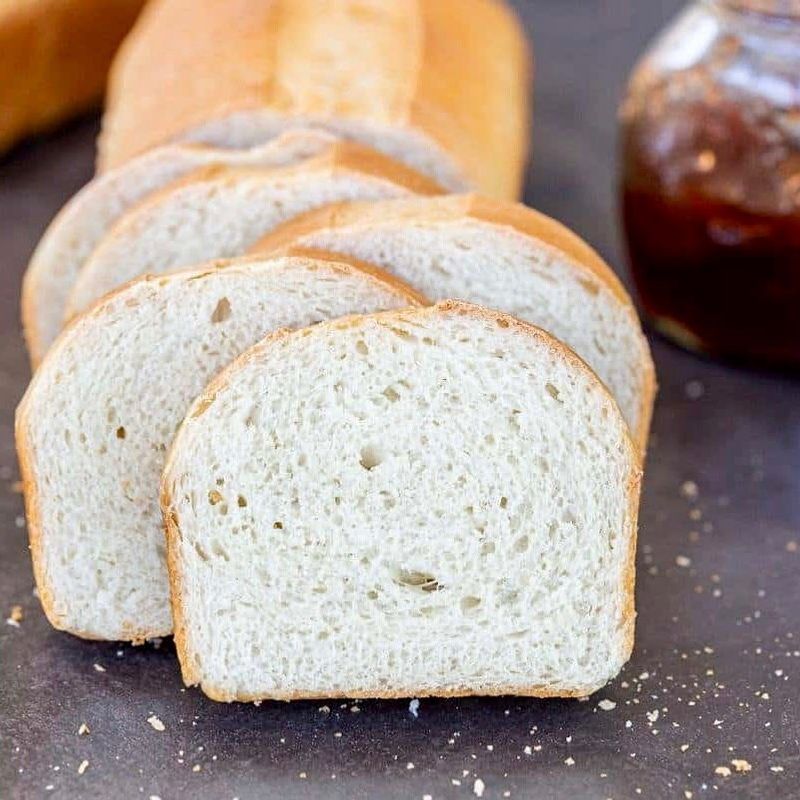
It’s the bread we all grew up with—the one that hugs your PB&J and folds into the perfect mushy bite. But nutritionally? It’s like that charming friend who never picks up the bill.
White bread is made from refined flour, which means all the good-for-you parts of the grain—fiber, nutrients, antioxidants—got kicked to the curb during processing.
What’s left is basically a sponge that spikes your blood sugar, gives you a quick burst of energy, then leaves you sleepy and snacky an hour later.
And don’t be fooled by those “fortified” versions with added vitamins. It’s like putting a band-aid on a balloon. If your goal is sustained energy and actual nutrition, this soft imposter is better left behind.
2. Potato Bread

This one tricks you with its golden hue and the word potato, which sounds earthy and cozy. But most store-bought potato breads are basically white bread in a Halloween costume.
They still rely heavily on refined flour and are often packed with added sugar and preservatives to give them that fluffy, irresistible texture. You’re not getting mashed potato benefits here—you’re getting a sugar rush with a side of bloat.
And if you’re imagining it’s somehow more filling because, you know, potatoes, sorry to disappoint. The actual potato content is usually minimal, and it brings little to the table when it comes to fiber or nutrients. Basically, it’s just starch pretending to be a hearty hero.
3. Sweetened Raisin or Cinnamon Swirl Breads
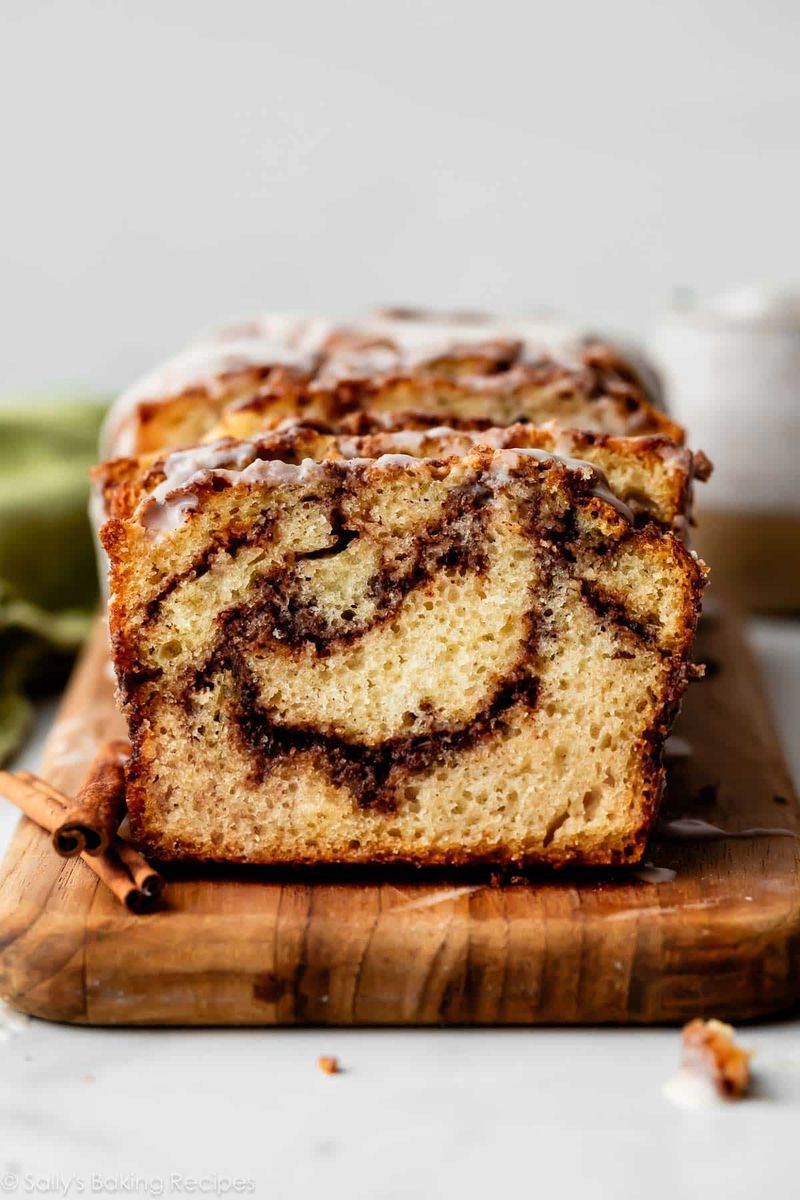
Don’t let the breakfasty aroma fool you—these loaves are basically dessert dressed as breakfast. Warm and toasty? Sure. Healthy fuel? Not even close.
With their swirls of sugar and sneaky syrupy ingredients, these breads offer a blood sugar rollercoaster before you’ve even had your second cup of coffee. Add in the fact that most are made with refined flour and very little fiber, and you’re setting yourself up for a morning crash that’s anything but sweet.
They’re delicious, no doubt. But if your goal is energy, balance, or nutrition, this kind of bread belongs in the treat category—not the breakfast one. Maybe keep it for special brunches… or dessert.
4. “Honey Wheat” Bread
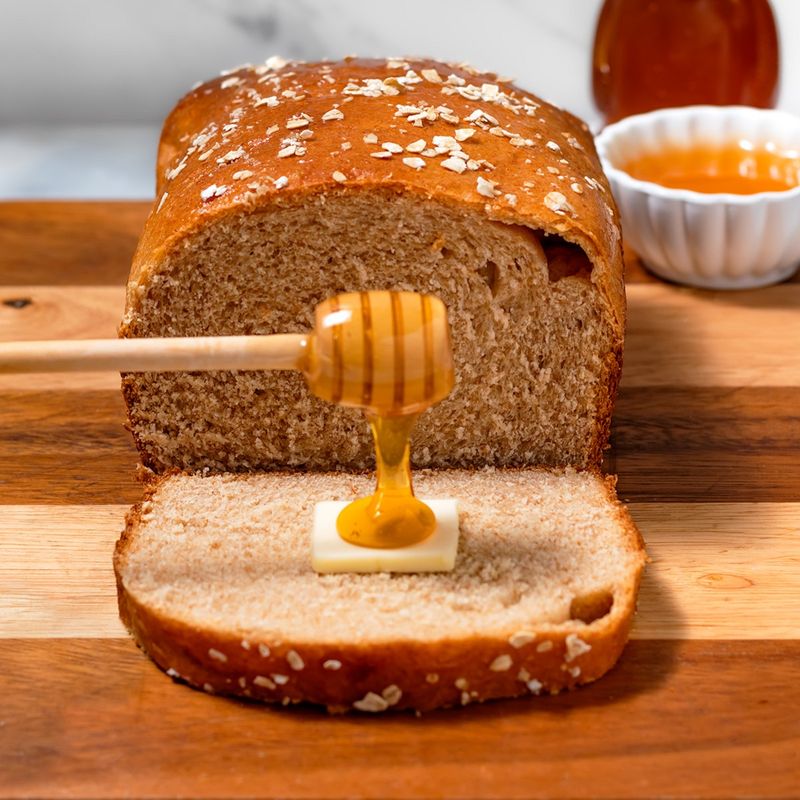
This one deserves an Oscar for Best Misleading Performance. Slap the words “honey” and “wheat” on a package, and suddenly it’s posing as the healthiest thing in the aisle.
But if you flip it over and read the fine print, you’ll probably see “enriched wheat flour” as the first ingredient—which is just a fancy term for white flour in a wheat-colored disguise.
The touch of honey? Usually there to sweeten the deal (literally) and distract you from how little whole grain you’re actually getting.
It’s the equivalent of ordering a salad and realizing it’s 90% croutons and ranch dressing. Tasty? Maybe. Genuinely healthy? Not so much.
5. Low-Calorie or “Light” Bread
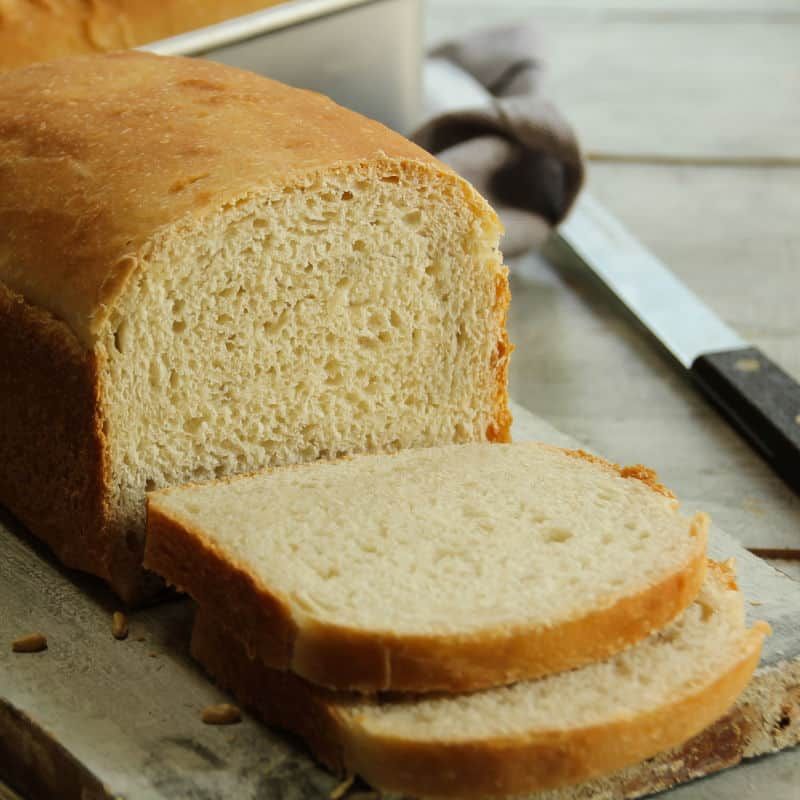
Fewer calories don’t always mean better choices—especially when it comes to bread. These low-calorie loaves are often airy, flavorless, and full of fillers trying to fake substance.
Many “light” breads strip out the good stuff—fiber, healthy fats, and complex carbs—and replace them with gums, thickeners, and sometimes even artificial sweeteners. It’s diet culture dressed in carbs. The result? You end up eating twice as many slices because one feels like a napkin with crust.
Instead of chasing the lowest calorie count, look for breads that actually nourish. Light bread might help your math on a label, but it won’t do much for your body (or your tastebuds).
1. 100% Whole Grain Bread
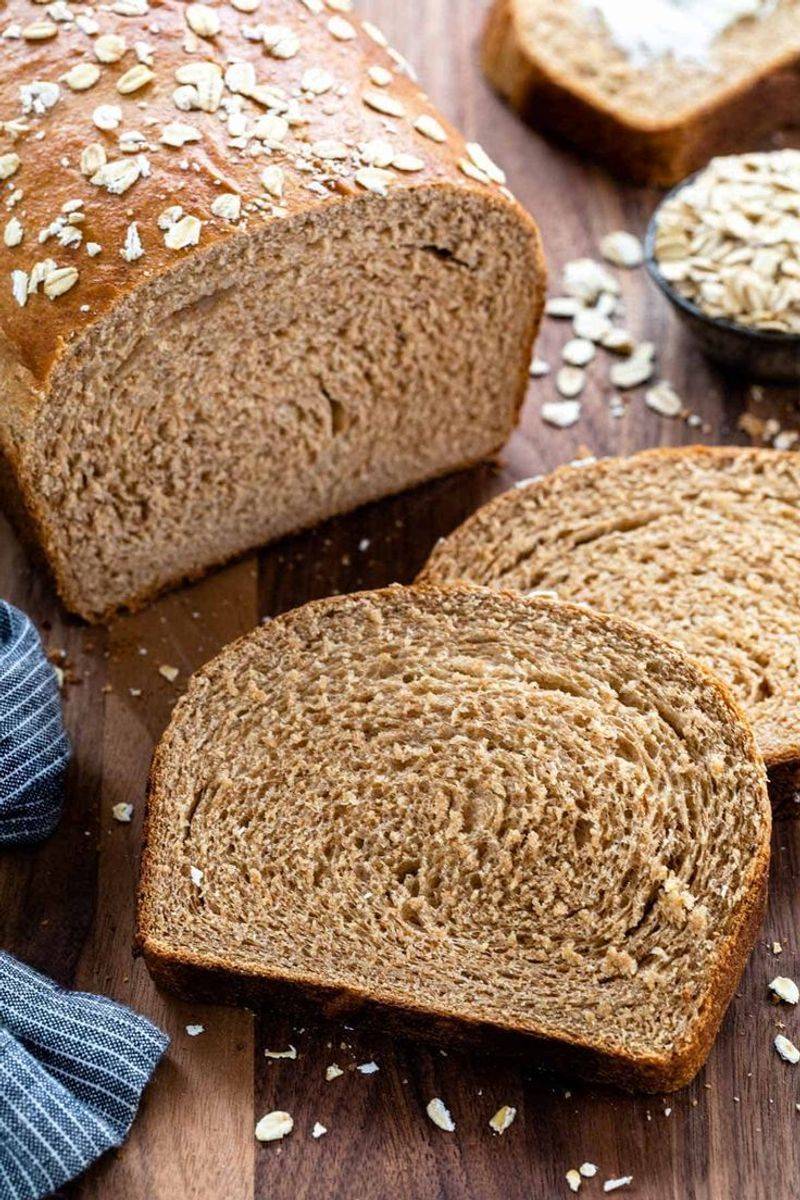
This is the real MVP of the bread world. It doesn’t just whisper “healthy”—it shouts it from the rooftops with actual, honest-to-goodness whole grains.
Unlike imposters hiding behind vague labels, 100% whole grain bread means you’re getting the entire grain kernel—bran, germ, endosperm, the whole shebang. That equals fiber, protein, B vitamins, and a satisfying chew that doesn’t leave you hungry an hour later.
The best ones are a bit denser, have a hearty texture, and may even have visible seeds and grains sprinkled on top. Just be sure to check the ingredients—the first word should literally be “100% whole grain.” If it’s not, drop it like it’s stale.
2. Sprouted Grain Bread (like Ezekiel Bread)
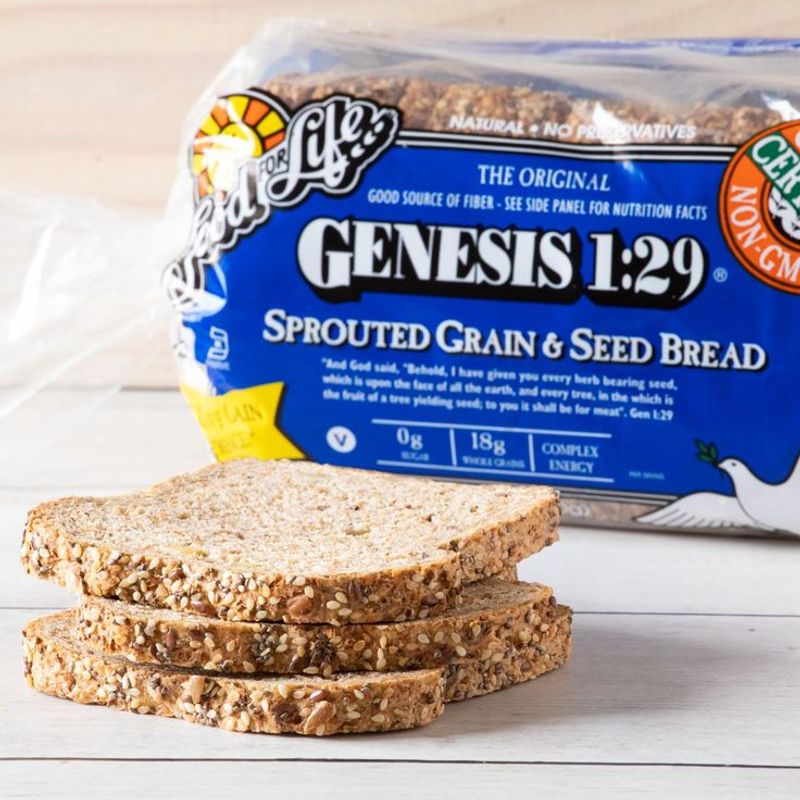
Don’t let the freezer section throw you off—sprouted grain bread is the stuff of legend for nutrition nerds. It’s made from grains that have been allowed to sprout before baking, which boosts nutrients and makes them easier to digest.
Brands like Ezekiel pack these loaves with a mix of sprouted wheat, barley, lentils, soybeans, and spelt. That’s not just bread—it’s a whole plant-powered party. They’re higher in protein, lower on the glycemic index, and full of that chewy, hearty vibe that actually satisfies.
It might not be pillowy-soft or sweet, but it’ll keep you full, steady your blood sugar, and make your avocado toast feel like a wellness retreat.
3. Sourdough Bread
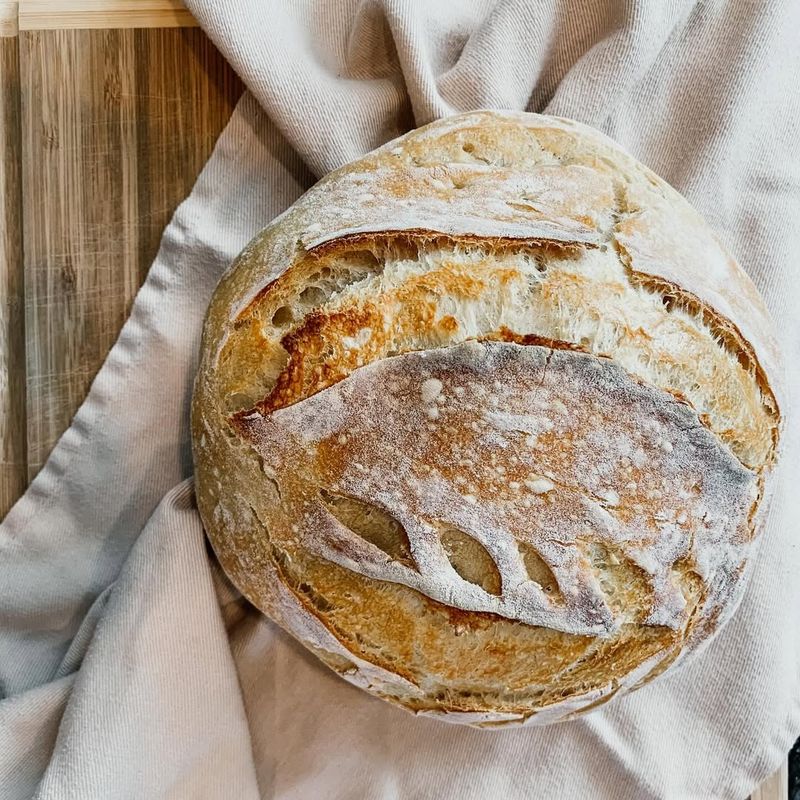
With its tangy flavor and chewy crust, sourdough feels more like a treat than a healthy choice—but it totally can be both. Thanks to natural fermentation, real sourdough is easier on your gut and has a lower glycemic index than regular bread.
The key? Look for sourdough made with just a few simple ingredients: flour, water, salt, and starter. Skip the supermarket versions that are “sourdough flavored” but actually packed with additives and yeast. You want the slow fermentation process—the one that creates those gut-friendly acids and that perfect bite.
Bonus: It pairs well with literally everything. Eggs, butter, jam, soup—sourdough doesn’t miss.
4. Rye Bread (100% Whole Rye)
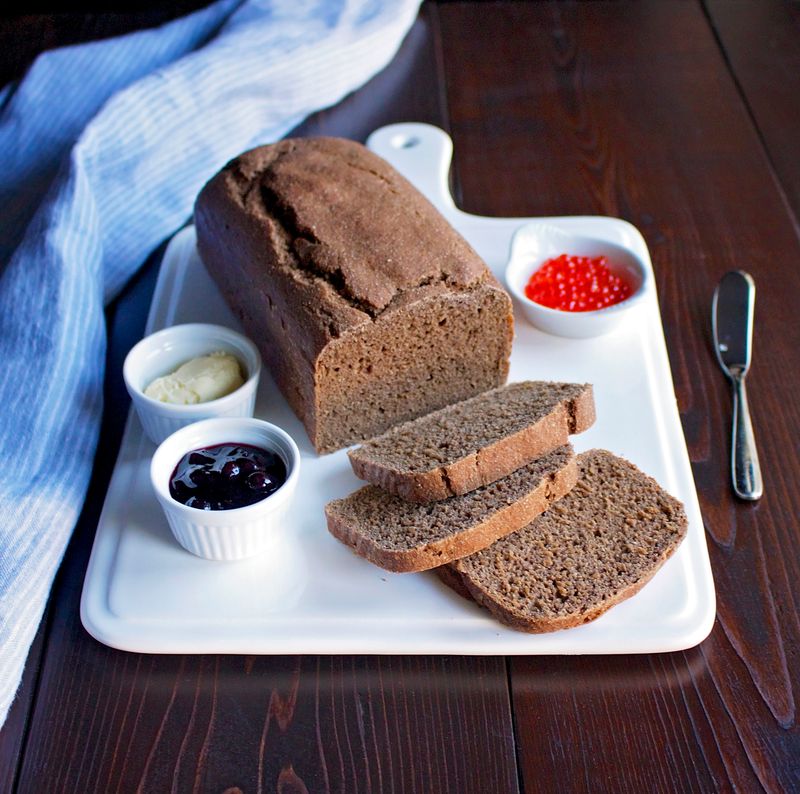
Dense, earthy, and a little moody—rye bread is like the brooding artist of the bread world. But don’t let its dark look intimidate you. Rye, especially when it’s 100% whole, is a fiber-packed powerhouse.
It digests slower than wheat, helping keep blood sugar in check, and has a stronger flavor that adds real character to sandwiches. Think of it as the opposite of boring. Plus, it often contains a compound called lignan, which has antioxidant properties that might support heart health.
Just keep an eye out—many “rye” breads at the store are blended with white flour. You want “whole rye” or “whole grain rye” as the first ingredient. Anything less is just rye in name only.
5. Oat Bread
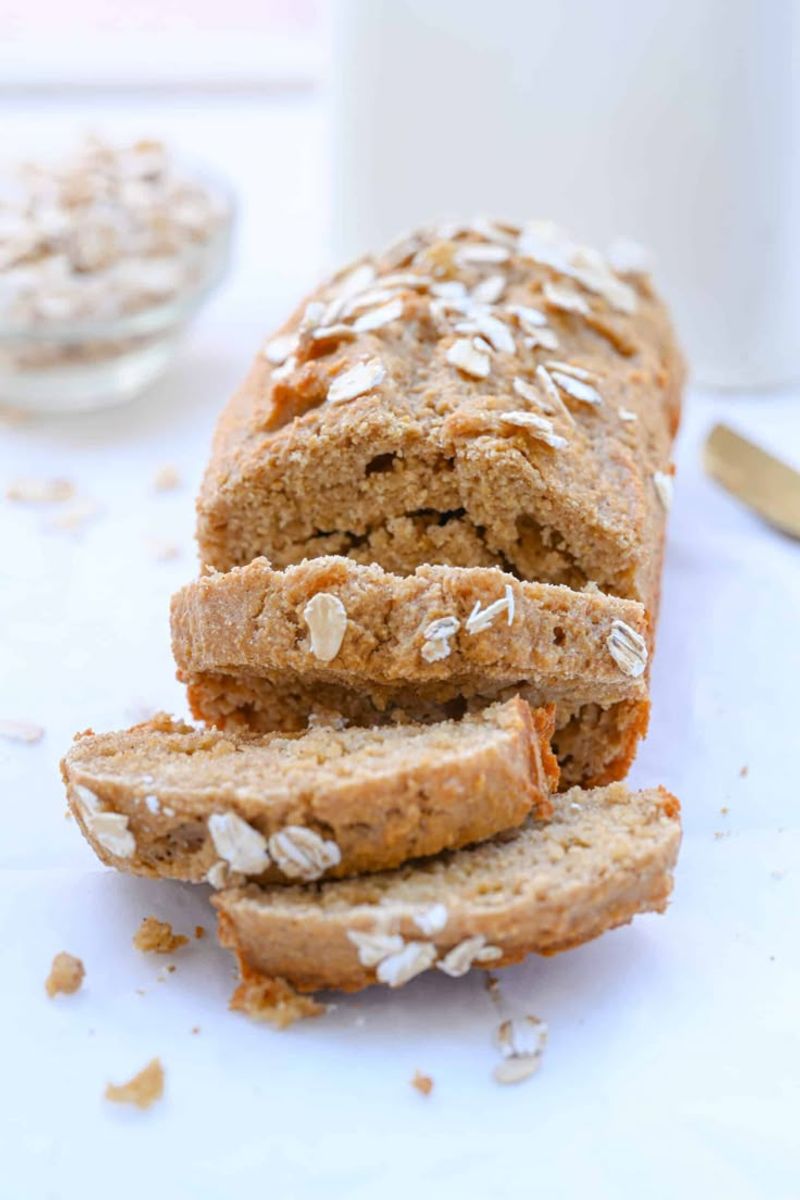
If your heart needs a hug, oat bread is here for it. Made with whole oats or oat flour, it’s rich in beta-glucan, a type of soluble fiber that’s been shown to lower cholesterol and support heart health.
The texture is soft and satisfying, and the flavor? Mild, slightly nutty, and super versatile. It works for toast, sandwiches, or snacking straight from the bag (no judgment).
Just be sure you’re getting the real thing—look for “whole oats” or “whole grain oats” up top in the ingredient list, not just sprinkled on the crust for aesthetics.
Oat bread brings the kind of balance most breads can only dream of: cozy, healthy, and quietly impressive.
Leave a comment